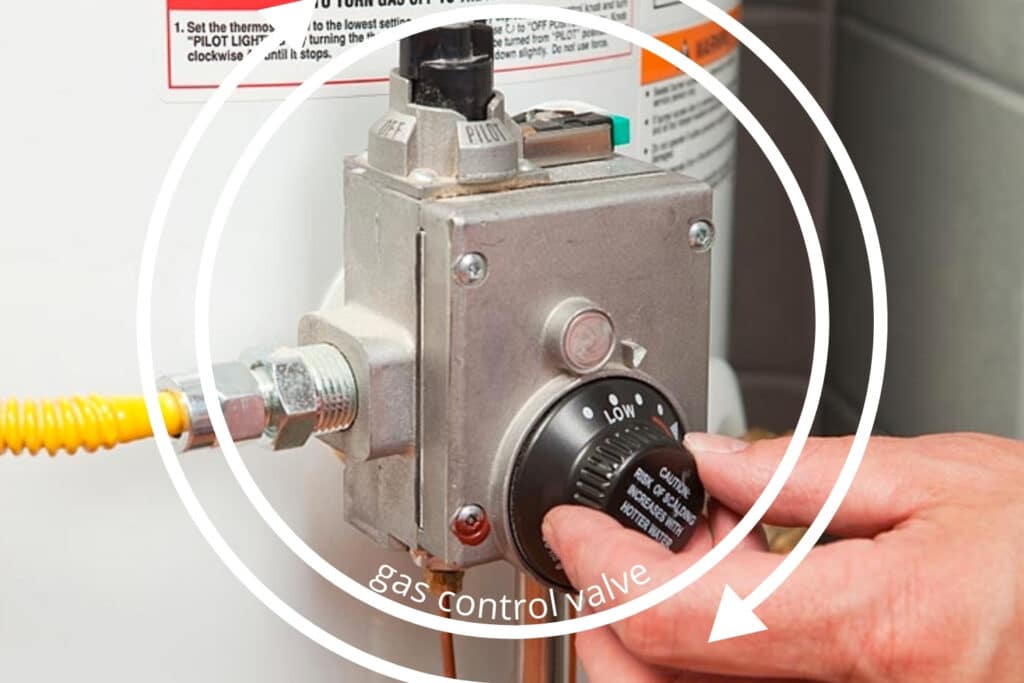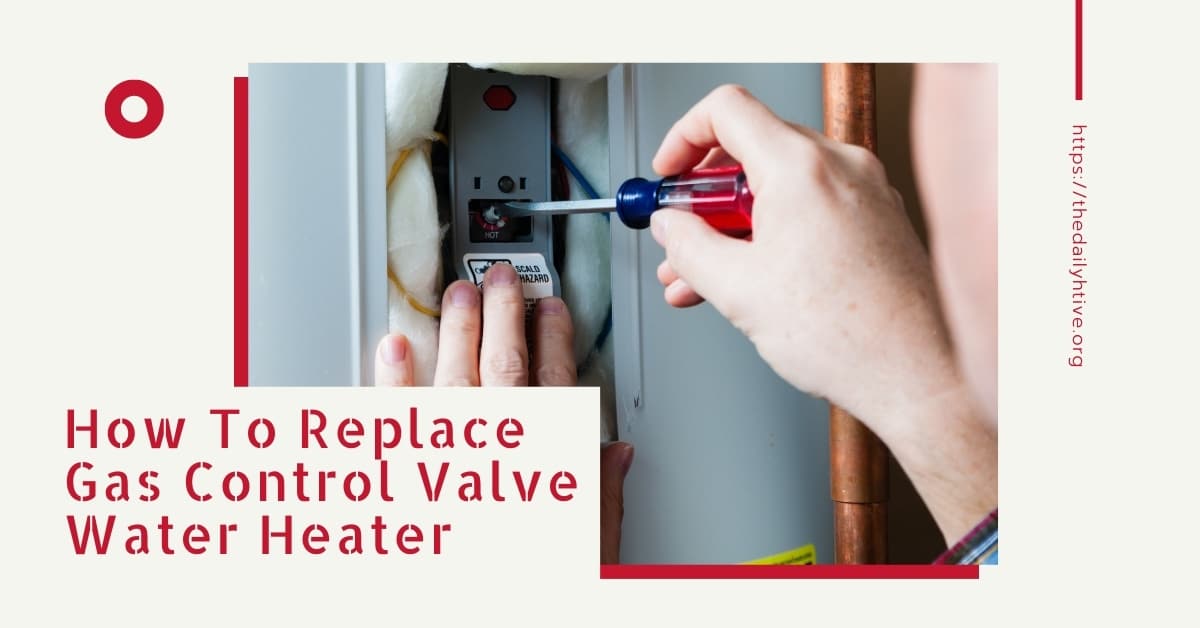Gas water heaters have a gas control valve allowing more or less gas into the unit, increasing the heat that it can produce. This gas valve has a pilot light and thermostat to help the heating process. There can be issues when one of these may be damaged, such as a faulty gas valve, faulty thermostat, or non-functional pilot light.
Water heater problems when the gas control valve is failure may cause include:
- water is not being heated to the correct temperature
- a reduced heat from your water
- water is too hot
Take a look at your water heater tank and inspect for any dirt or debris build-up in the heating chamber. If there is, you will need to flush your water heater.
What Does A Water Heater Gas Control Valve Do?

As mentioned before, the water heater gas valve controls the amount of gas entering the water unit. The control valve is then ignited with the pilot light then heats the thermocouple. The thermocouple signals the gas control valve when it is warm, allowing the burner to start heating the water within the tank.
This is a joint partnership between all parts, and this is one of the main reasons for a gas control valve replacement. The gas control valve also acts as a safety feature. It will shut down to prevent the water from getting too hot that can cause serious damage and pressure to the tank.
Troubleshooting Gas Control Valves
Gas control valves rarely have issues more than usual the problems can be related to a faulty thermostat, pilot light, or even a gas burner.
The usual or more likely issues come from the thermocouple, which is quite easy to replace. If you see that the thermostat, gas burner, or pilot light is not working, it’s best to replace them first before replacing the water heater gas control valve.
Water Heater Gas Control Valve Replacement
Warning: Natural gas can be extremely dangerous to work with. The gas should always be turned off before attempting to repair a gas water heater. If you are not comfortable working in such a dangerous environment, contact a professional plumber for help.
The gas control valve replacement process is quite simple. There is also an easy-to-follow video to help if there are any issues with this process. You might have wires connecting from the control valve to a thermal fuse in the burner compartment on new gas water heaters.
This is a new safety feature that will turn off the gas encase of a flood or fire. They must be reconnected as they are; this is vital to ensure safety in your home.
Step 1 – Buy The Parts
Visit your local hardware store, bring your old gas control valve with you, and ask for assistance if you’re not comfortable deciding on the correct replacement.
Step 2 – Shut Off Gas
Turn off all the gas entering into the unit and turn the gas control knob to the off position turn the gas control valve off. This will ensure that there is no gas entering the tank. Make sure you do not smell any gas; if you do, I recommend calling the gas company to take a look as you may have a serious problem.
Step 3 – Turn The Water Supply Off
Turn off the water supply to your water heater tank and begin to drain the water tank, as this will help make your job a little easier. Once all have been drained, check the discharge pipe and disconnect it from the tank.
Step 4 – Remove the Old Valve
With a pipe wrench, remove the gas control valve from the tank checks the video for help. All heaters are different; try to check how they are removed by looking in your owner’s manual.
Step 5 – Fix New Gas Control Valve
The same way you removed the old one, attached the new gas control valve using a pipe wrench. Start by hand, then use your wrench to ensure it is tight to prevent any leakages.
Re-attach the discharge pipe to ensure it’s attached to the valve outlet (not all water heaters have this.) Turn on the water and fill the tank back with water. At the same time, open the gas valve and gas knob.
Call a professional technician if you don’t feel 100% comfortable with the water heater gas control valve replacement process.






